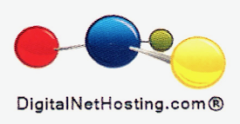Busting The Five Myths Of Saas
Myth 1: SaaS is irrelevant.
Looking at the growing track record of SaaS success, the statement that “SaaS is irrelevant” seems to lose its significance at once. Over the past three years, there is a significant increase in SaaS usage, with companies adopting it for a variety of reasons. Some wants to embrace SaaS because of its features like faster deployment, reduced capital expense and scalability while others are running after the effectiveness. On the other hand, ease of use remains the biggest driving force. Enterprises are not only renewing their SaaS subscriptions but also planning to expand the use of SaaS. Indeed, Gartner has estimated an increase of 20pc in the SaaS adoption rate over the next two years and it will be doubled to US$11.5bn by then.
Myth 2: SaaS will not have a major impact on the IT industry and will fade over time.
In addition to winning increasing acceptance from global customers, SaaS model is also gaining momentum in the IT industry. The nature of SaaS makes it a great way for enterprises to have the best software tools to work with, without worrying for any overhead expenditure. Lower cost of ownership that comes along with SaaS model allows customers to leverage the benefits of a broader range of products than they could otherwise consider. And as long as the quality and reliability of SaaS continues to get better, the appeal of SaaS is not going to fade ever.
Myth 3: SaaS is less reliable and less secure than on-premise applications.
Service outages experienced by Google or Salesforce generated quite a bit of hue and cry throughout the industry, leaving all wondering if SaaS is really ready to meet all the hype. However, such types of incidents don’t happen frequently, and they don’t last as long as enterprise disruptions. Even if we go through the IT security breaches news, no major SaaS incident has been reported yet. So it would be wrong to question the reliability and security of SaaS so soon.
Myth 4: SaaS is limited to one type of application.
In fact, SaaS supports the overall range of software available today. Users can also configure different SaaS applications according to their individual business requirements. It’s true that SaaS cannot undergo customization as traditional applications can; but it’s not at all a disadvantage. Many enterprises have customized their in-house applications to such an extent that no vendor can fully support them now. Designed to support multiple users with a single code base; SaaS can be packaged and priced in numerous ways.
Myth 5: SaaS can turn out to be costly in the long run.
Much has been made of how cost effective SaaS is in the long run, ignoring the fact that what is actually grabbing the attention of enterprises is its lower upfront costs! Businesses that adopt SaaS model save initially by saving on hardware and operating system installation. Since the SaaS provider takes the complete responsibility of maintaining the system including troubleshooting, equipment replacement and applying upgrades, enterprises can have their IT staff focus on core competencies. With everything in place, all you pay is for software.
Moreover, businesses that go with SaaS services generally opt to lease the software on a pay-as- you-go basis. Such a pricing model is not only economical but also easier to manage over time.
The best course of action is to plan your SaaS requirements according to your business and don’t let market talks derail your decision. Understanding your enterprise’s application needs will help you determine an apt long term SaaS model as well as the SaaS vendor. You can consider Genpact SaaS services which are not only supported by breakthrough infrastructure technologies but also designed to meet the unique performance, security, integration and cost challenges facing SaaS providers today.
Know more about SaaS Services at http://www.genpact.com
Source by Saumya Aggarwal

